Thousands of years later as fashion has evolved enough to create “high-tech fabrics” such as gore-tex and spandex, little has changed. The function of our clothing is still primarily to keep us warmer, drier, cooler or safer.
Until now.
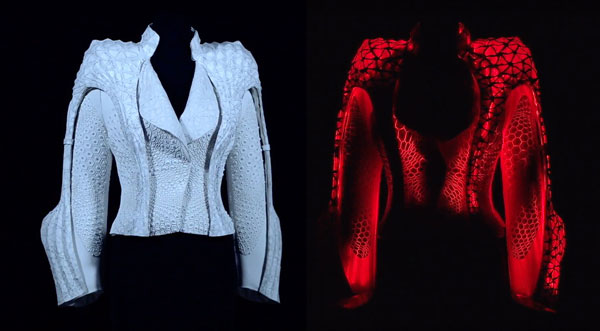
(Image source: www.asherlevine.com)
The smartphone and other connected devices have swayed fashion designers in the high-tech direction. As we head toward 2018, fashion of the future is stepping up its game. Nanotechnology can make “smart fibers”. Conductive yarns are enabling our fabric to communicate with other devices. And, 3D printing is on the verge of revolutionizing the entire fashion industry.
Here are four fascinating examples of fashion of the future being developed now:
Modern Meadow
The Museum of Modern Art’s recent exhibit, “Items: Is Fashion Modern?”, explored the past, present and future of 111 iconic items of clothing and accessories that have had a tangible impact on the modern world.
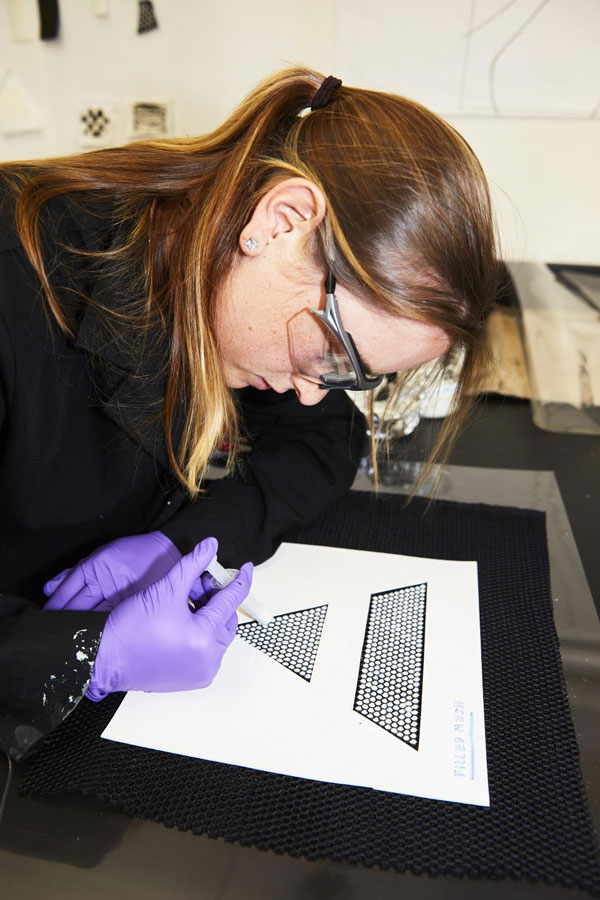
(Image Credit: Modern Meadow)
Among the items were classic pieces such as Levi’s jeans, the plain white tee and the Little Black Dress. However, beyond the basic clothing most of us wear in our day to day lives, they also displayed “Zoa” by Modern Meadow.
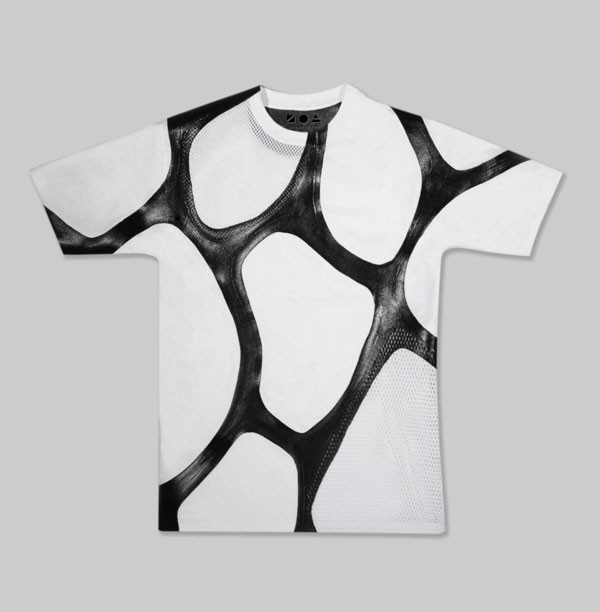
(Image credit: Sara Kinney for Modern Meadow)
Modern Meadow is a biotech startup pioneering biologically advanced animal-free materials. This means producing materials such as leather without ever coming in contact with a cow. “Zoa”, their signature material is a biofabricated leather made from a genetically engineered strain of yeast to make collagen—similar to the collagen found in our skin.
Suzanne, the company’s Chief Creative Officer, believes her job is to take the already breathtaking designs found in nature and make them ready-to-wear. “Imagine leather that’s as lightweight and transparent as a butterfly wing or has the natural stretch of rubber,” she says in an interview for Popular Science. “Or imagine a material with the dynamic responsiveness of the skin of a chameleon.” In nature, these unique qualities result from the spontaneous assembly of biological sells. Modern Meadow customizes a material’s strength, weight and elasticity by manipulating cell cultures.
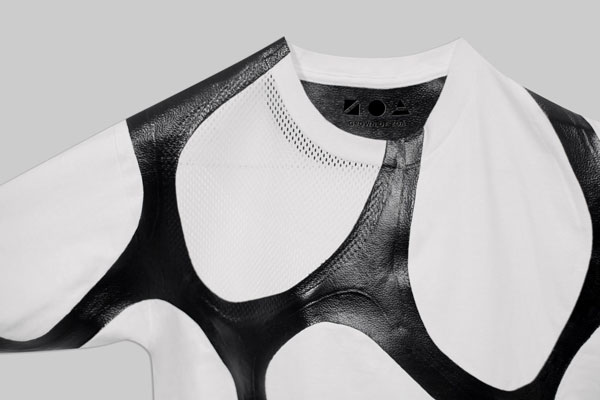
(Image credit: Sara Kinney for Modern Meadow)
The implications of this technology might take fashion in a whole new direction. Suzanne exclaims, “I had never imagined a piece of clothing could be alive. And I have nothing to do with its creation. It’s growing for me.”
Foræva
The one-of-a-kind collaboration between Swarovski, fashion designer Lana Dumitru, and architect Vlad Tenu has taken fashion tech to a whole new level. Their unique project titled the Foræva dress, was inspired by the traditional folk pattern found on Romanian rugs.

(Image source: www.design-milk.com)
The duo used a 3D simulated, algorithmic design method and digital prototyping to digitally replicate the rug’s pattern using over 25,000 Swarovski crystals. They also used custom algorithms to form undulating lines that further defined the reinterpreted pattern of the rug. The Swarovski crystals embellishing the pattern then act as if they were enlarged 3D pixels, which took a team of 15 people, six painstaking months to adorn.
The meaning behind Foræva is a story about space, mythology and humanity, encapsulated in this small film:
The film begins in the next space age and transports ancestral traditions to the present time. The dress is designated for Æva, a symbolic character that has come from the future to inspire and guide humanity through the rediscovery of quintessential values. In a way she represents the old and future version of Eve, wearing tradition as the most fashionable thing in the galaxy.
DuoSkin Tattoos
Another remarkable application of technology in fashion is the DuoSkin temporary tattoo developed by researchers at MIT’s Media Lab.
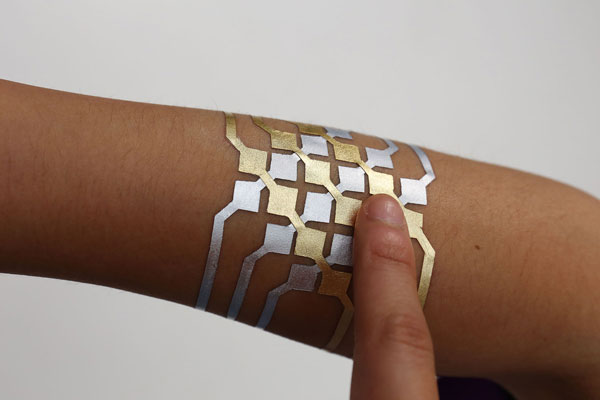
(Image source: www.duoskin.media.mit.edu)
The research team was led by PhD student Cindy Hsin-Liu Kao and worked with Microsoft Research. They designed the DuoSkin tattoos to look similar to the popular gold and silver flash tattoos found in today’s music festivals. However, unlike the traditional flash tattoos, DuoSkin tattoos are made with gold metal leaf because of the material’s conductive capability, allowing it to interact with an electronic circuit that responds to touch.
The prototype features gold leaf traces connected to a microcontroller and wireless communication unit. This enables the tattoo to seamlessly interact with smartphones, computers and other digital devices.
The DuoSkin Tattoos have four patterns for four functions:
- A simple button for single clicks
- A slider for single scrolls
- A slider for continuous scrolls
- A complex lattice shape for trackpad use
Kao explains, “This is something we purposefully wanted to make accessible to anyone. All you need is a graphic design software like paint or something to design the circuit. Then you would basically hook this up to a vinyl cutter and cut out the traces of the film layer on the tattoo paper and then you just lay on the gold leaf and remove it. After this you apply the tattoo onto your skin like a normal temporary tattoo.”
Although the DuoSkin tattoos’ capabilities of communicating with connected devices is impressive, the implications for future uses is even more outstanding. For example, materials scientist John Rogers has developed a similar tattoo-like electronic mesh which monitors vital health measurements such as temperature, hydration and strain.
Kinematics Dress
The Kinematic dress, designed by Nervous System design studio, is yet another unique vision for fashion of the future. Each dress is 3D printed as a single folded piece requiring no assembly, but are actually made from thousands of unique interlocking components.
This unique production style represents a fresh approach to clothing manufacturing that incorporates design, simulation and digital fabrication to create complex and highly customizable products.

(Image source: www.youfab.info)
What’s most interesting about 3D printing manufacturing of Kinematics garments is that in reality they are most compatible with our bodies. Traditionally, our three dimensional bodies are clothed with garments made from flat cut materials painstakingly pieced together, which doesn’t make much sense.
Kinematics dresses are created three dimensionally, from direct body scans and require no assembly. This is due to the intelligent folding strategy they employ that compresses the garments into a smaller form for efficient fabrication. By using this folding technique, kinematics can create complex structures physically larger than a 3D printer that unfold into their intended shape after printing.
